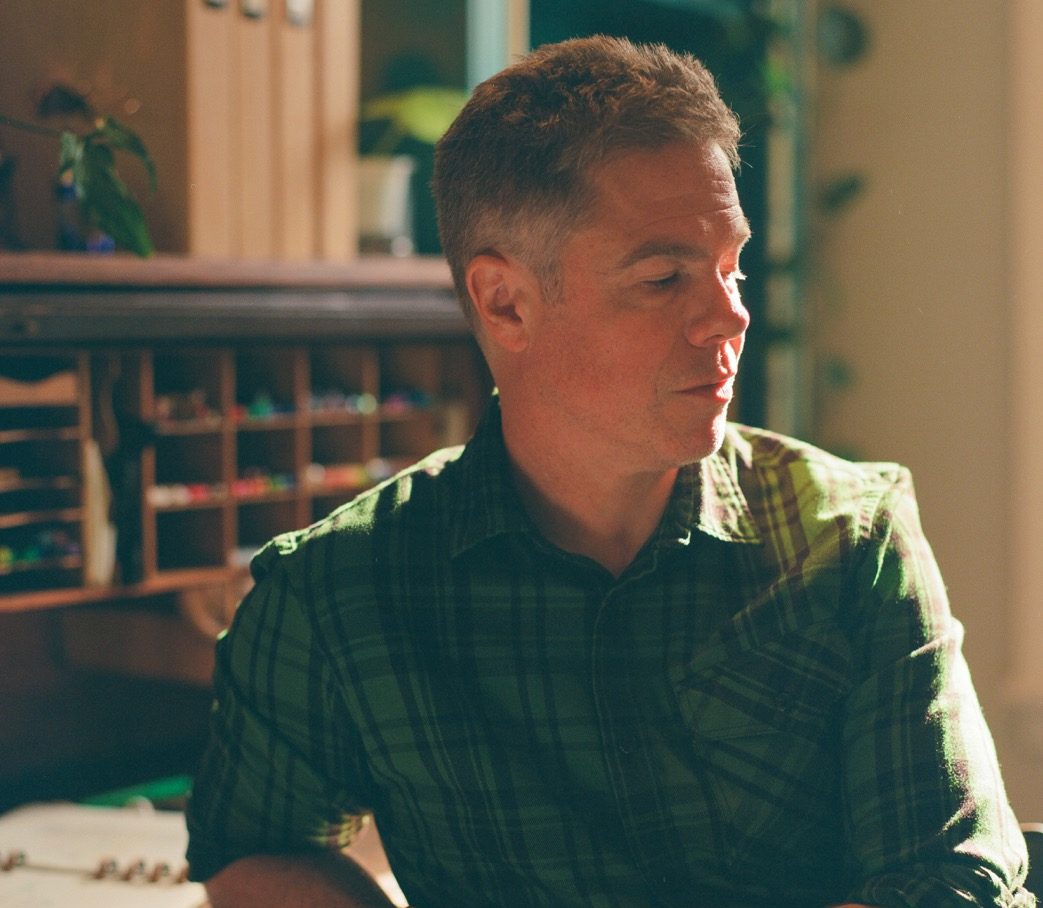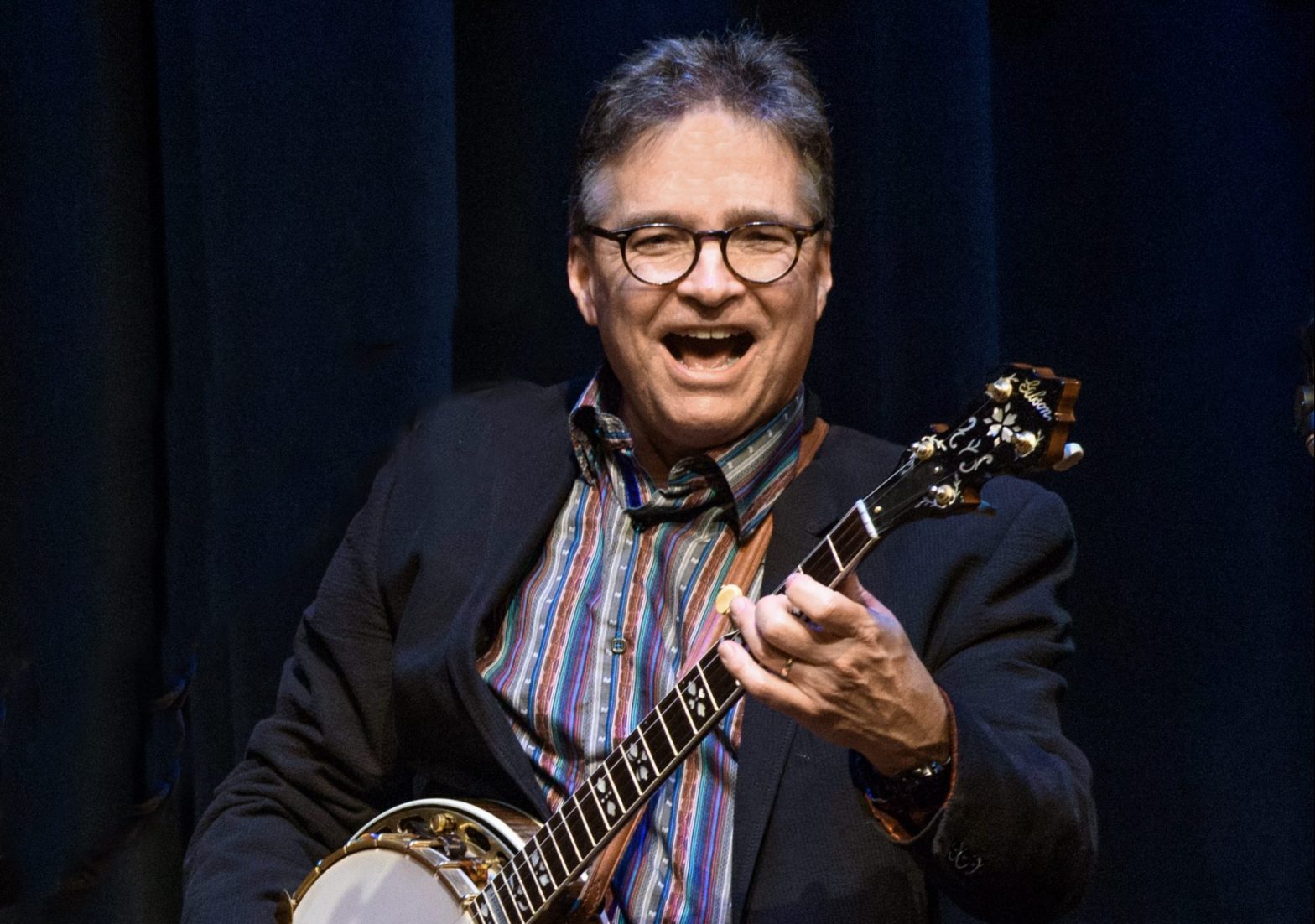At the intermission of his concerts, John McCutcheon asks attendees to submit song requests for the show’s second set. It’s how the Grammy-nominated folk singer, who’s released 44 albums during his five-decade career, figures out what to play. With a huge catalog of material, McCutcheon says his performances are spontaneously constructed, and singing is just part of the evening. He often introduces songs with lengthy stories, and he makes time to showcase his prowess on more than a dozen traditional acoustic instruments, including banjo, fiddle, and hammer dulcimer.
“It’s an interesting tightrope to walk,” says McCutcheon, 71, of his time on stage. “You want to do your new stuff, but people come because of what they’ve heard before. Being a soloist has forced me to learn how to read an audience. At this point, singing songs is the easy part. What’s fun is crafting a show that comes together as a whole.”
Of the song requests he solicits from his audience, McCutcheon says there are some typical favorites, including “Christmas in the Trenches,” an engaging ballad set in World War I from the 1984 album Winter Solstice, and “Old People in Love,” a sentimental tune from 2009’s Untold.
Another staple, “Kindergarten Wall,” has roots in Charlottesville. McCutcheon wrote the cheery recollection of lessons learned during the first year of school, found on his acclaimed children’s album Mail Myself to You, after one of his kids finished kindergarten at Burnley-Moran Elementary School. McCutcheon lived in town for two decades, from 1986 to 2006, and although that time coincided with a period of heavy national touring, he fondly recalls collaborating with members of the local music scene and fostering community with other singer-songwriters who lived in the area, including Mary Chapin Carpenter, Ellis Paul, and the late Jesse Winchester.
“We were all pals, and it still feels right when I get together with some of these folks,” McCutcheon says. “For me, Charlottesville became a place where you could become engaged in a community and lend a hand in your own peculiar way.”
A standout memory? On New Year’s Eve in 1999, McCutcheon assembled hundreds of musicians, including church choir singers, rock players, and the Charlottesville High School band, for a special performance for First Night Virginia that took place under a big circus tent set up near where the Ting Pavilion is currently located.
“The kind of imagination that can come from a really creative small city like Charlottesville was really exciting and liberating,” he says.
McCutcheon now resides in the Atlanta area, but he keeps Charlottesville in rotation on his regular touring schedule. He’s found a comfortable spot for shows at Piedmont Virginia Community College’s Mainstage Theatre, where he’ll perform on Saturday, April 27.
When McCutcheon returns to town, he’ll bring material from his latest album, last year’s Together, a collaborative collection of songs with fellow longstanding folk artist Tom Paxton—an influential figure in the genre who made his mark alongside Bob Dylan and Dave Van Ronk in the 1960s Greenwich Village revival scene.
At the onset of the pandemic, McCutcheon and Paxton started meeting for weekly writing sessions via Zoom, and the duo found a groove that yielded 14 songs. Like much of McCutcheon’s discography, the album’s lyrics move between subjects that are topical, humorous, historical, and personal.
Album opener “Ukrainian Now” takes a supportive stance for citizens of an invaded country still in the throes of war. With emotive bow work from ace fiddler Stuart Duncan and a stirring chorus, the song has broadly resonated with listeners, and it even resulted in a Ukrainian family living in Seattle sending McCutcheon a bandura—a traditional Ukrainian string instrument—as a gesture of thanks.
“It went viral, as the youngsters say,” McCutcheon says of the song. “We were getting comments from frontline soldiers in Ukraine. When I decide to write a song [about something], I want to contribute to the conversation in a way that helps people see it in a way they hadn’t thought about it before.”
McCutcheon already has album number 45 in the works, and he says it will include backing from Charlottesville drummer Robert Jospé and a song written with Trent Wagler of The Steel Wheels. Although he’s glad to be back on the road, McCutcheon says he’s continued to embrace remote co-writing, with fruitful results.
“It’s kept the creative juices going,” he says. “I’m still doing it regularly and coming up with a lot more songs.”










